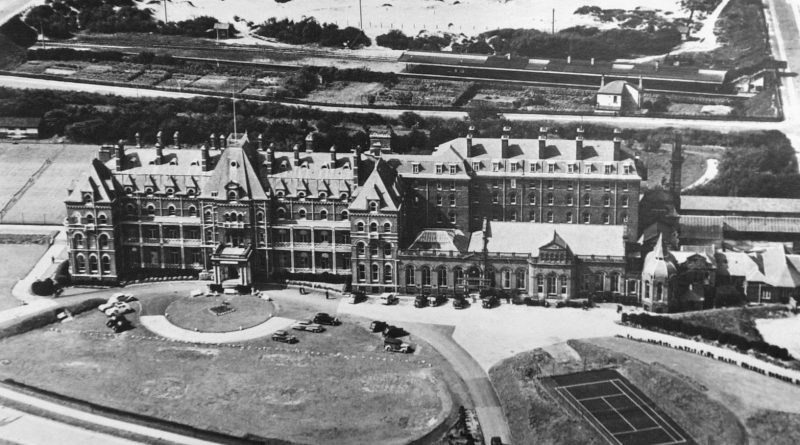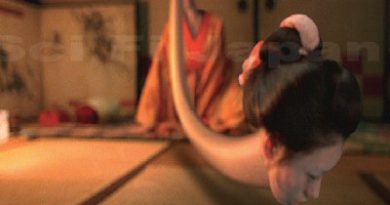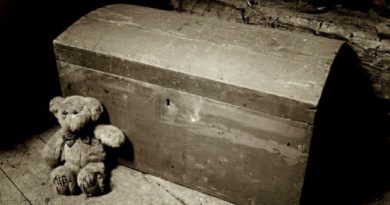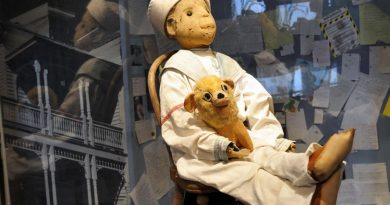Britain’s Most Haunted – Birkdale Palace
The Palace Hotel
The Birkdale Palace Hotel in Southport, Merseyside was a luxury hotel on the North-West coast of Lancashire. The huge 200 foot long building, opened its grand doors in 1866 and lived a very colourful life before being torn down in 1969.
It was long rumoured in the area that the hotel was built the wrong way round by architect William Mangall. With the front of the building originally meant to face the seafront. Legend has it Mangall threw himself off the roof to his death and later haunted the lift shafts which were built on the spot where he landed (we’ll get to the lift later).
By 1919 The Palace boasted rather fancy hydropathic baths, it’s own airport, a railway station, 1000 rooms and 200 bedrooms and suites. Over the years the building played host to huge Hollywood stars like Frank Sinatra and Fred Astaire, Clark Gable and Judy Garland and was know for its lavish parties and functions, making full use of it’s grand ballroom and three bars. During the Second World War it was taken over by the Red Cross and became a rehabilitation centre for US airmen. It was one of the biggest centres in the country for US Air Force personnel, with more than 15,000 recuperating from active flying service there.
But darkness permeated the hotel’s history. It became notorious as a haunted hotel. Staff noticed an abundance of strange activity there. One receptionist who worked there in the 50s called Pauline, recalled never using the lift and never venturing around the hotel unaccompanied as she felt a sense of dread there for reasons she couldn’t explain. In 1961, there was a horribly gruesome real event that took place. Six-year-old girl Amanda Jane Graham was abducted by a porter who worked at the hotel. Her dead body was found under his bed, she had been raped and strangled. Alan Victor Wills, who worked at the hotel as a porter, was convicted of her murder and sentenced to life in prison. Wils was 33 but said to have had a mental age closer to 11. There is also a persisting story about two sisters who carried out a suicide pact in the hotel.
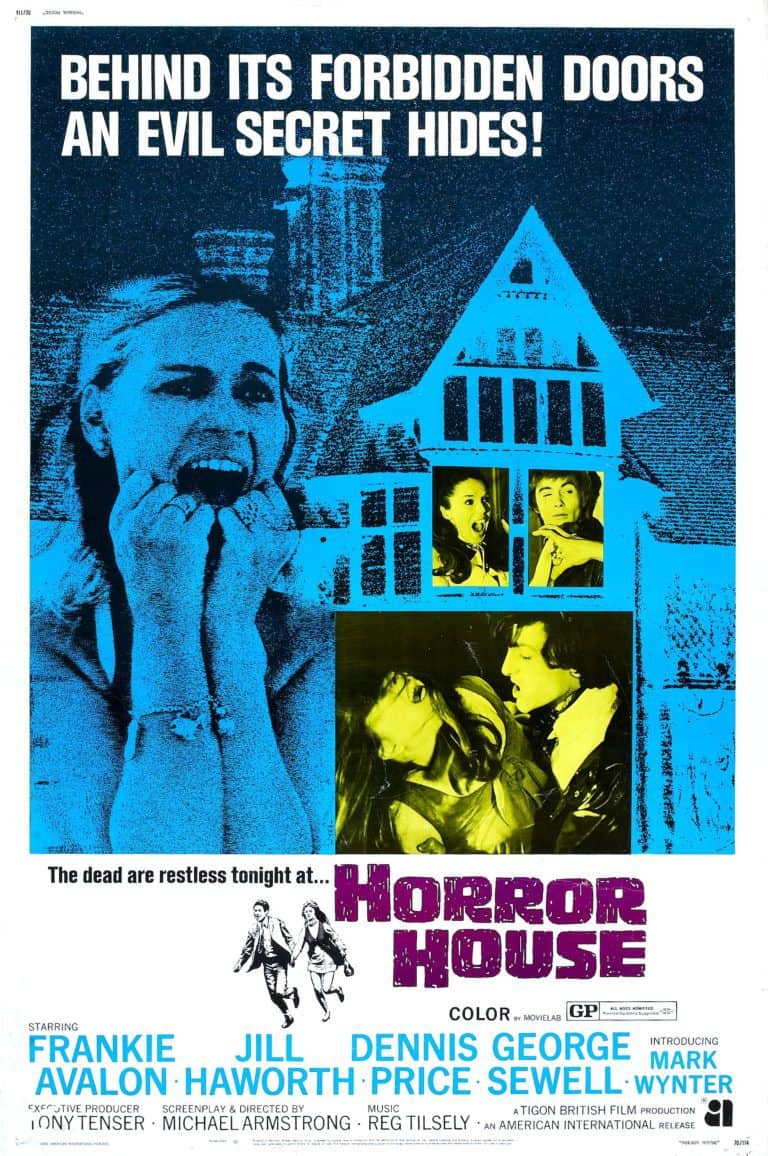
he Palace was demolished in 1969 amid huge local publicity. Partly this was because of the hotel’s prestige, the demise of which mirrored that of the English seaside holiday in general and Southport’s status in particular.
But the other reason for such public interest was the hotel’s notoriety for more mysterious reasons. Local legend claims that the architect committed suicide when he discovered that the hotel had been built back to front, with its grand facade facing inland, instead of seawards.
Other stories tell of two sisters dying in a suicide pact at the hotel. Most grisly was the murder of a six-year-old Southport girl by a hotel porter in 1961. Her body was found under a bed. The hotel’s reputation never really recovered. The Palace was used as a location for several films. Boris Karloff, who played the definitive Frankenstein, made his last film there, The Sorcerers, just after the hotel closed in 1967.
The hotel was also reactivated for the Norman Wisdom film, What’s Good For The Goose, co-starring Sally Geeson, and The Dark, starring Dennis Price, was shot in the cellars.
Before 1967, numerous top-class football teams in the North West trained in the hotel grounds and the Hungarian World Cup Football team stayed there when the World Cup was hosted in England in 1966.
The decision to demolish the hotel when it came shocked Southport as the council expected the hotel to be reopened. Two years afterwards the hotel became the subject of international interest. As a demolition crew moved in, various seemingly paranormal activities occurred.
Most memorably, the hotel’s large Victorian lift allegedly operated of its own accord, even after the electricity supply was cut. TV crews, journalists and ghost-busters arrived in droves to investigate the psychic phenomena. The hotel had an item on BBC TV’s then flagship daily current affairs programme, 24 Hours, devoted to it.
The hardened demolition crew were terrified. They were hearing voices, the sounds of arguments and a woman’s stiletto heels clattering through the foyer. The workers, from Rochdale, said that they were even locked in their rooms on occasions. Joseph Smith, in charge of the demolition crew, told the Daily Post in May, 1969: “My men are scared out of their wits with this lift. We cannot explain what’s going on.
“Now that the power is cut off, the only way to move the lift is by winding it from the top. But on several occasions that the men have seen the lift move, no one has been near the handle.
“Without anyone doing anything, the lift doors close suddenly and it shoots up the lift shaft. Doors open of their own accord and the lights on the lift control panel flash on and off.”
Electricity board officials said there was no power going into the Palace at that time. Mr Smith said: “It’s all the more frightening as the hotel is reputed to have been built back to front and the architect who designed it committed suicide by jumping from the top landing. “He landed, so it is said, on the very spot where the lift now stands.”
The Palace Hotel was probably always something of a white elephant, with a location that was never quite satisfactory. After opening in 1866, it failed and was relaunched as a hydro hotel in 1881, offering hydropathic (water-based) health treatments.
It was taken over by the American Red Cross in 1942 and used as a rest home for US Army airmen until 1945.
It was one of the largest rehabilitation centres in the country for US Air Force personnel, more than 15,000 recuperated from active flying service there. It was the only Red Cross station to take entire bomber crews as one unit. More than 300 English girls served as volunteers at the centre and many romances that started with the servicemen resulted in marriage.
While the Birkdale Palace may be long gone, the hauntings apparently haven’t. The ghost of a little girl reputedly inhabits The Fisherman’s Rest. The pub was where 14 lifeboatmen were temporarily laid to rest after being drowned trying to save other souls on December 9, 1886, when the sailing ship Mexico was driven ashore off Southport.
The bodies of their fellow crewmen were viewed at the hostelry by the jury from the hastily convened coroner’s inquiry held at the Palace Hotel. The Fish got its name in tribute to those brave lifeboatmen. The bar counter was moved to the back of the pub after the tragedy and the lost men are also touchingly recalled by the 14 small brass mermaids which hold the bar handrail in place. Even to this day stories abound in the local area of strange goings on in the newly built properties that reside on the original land. In the 90s poltergeist activity was reported at a house on the corner of Oxford road, part of the site that was The Palace. A family fled their home leaving all possessions behind. Something certainly spooked them. Eye witness reports from those who visited the scene said it was literally like they’d suddenly left in the middle of what they were doing at the time, with cans and a tin opener set out in the kitchen ready for cooking and other signs they’d left in a hurry.
